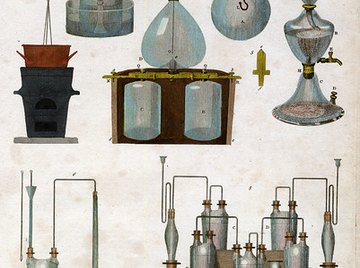
Sir Humphrey Davy discovered chlorine dioxide in 1814. This versatile chemical has uses in hygiene, detoxification and the production of paper, but is highly volatile and must be made where it will be used.
Description
Chlorine dioxide appears as a greenish-yellow or reddish-yellow gas. At minus-59 degrees Celsius (minus-74 degrees Fahrenheit), it turns into crystals. It boils at 11 degrees Celsius (51 degrees Fahrenheit). Its formula is CIO2.
Production
In lab settings, chlorine dioxide is prepared by oxidizing sodium chlorite. This process requires the use of such dangerous chemicals as sulfuric acid.
Uses
Chlorine dioxide is used in pulp bleaching, flour bleaching and water treatment. It can also be used to disinfect the air and is used in some mouthwashes and toothpastes.
Warning
If there is more than 10 percent saturation of chlorine dioxide in the air, it can explode into oxygen and chlorine components. Thus, it is usually handled as a gas dissolved in water. According to Scotmas Group, it's too volatile to be transported over the road.
Interesting Fact
Chlorine dioxide was first used for water treatment at the Niagara Falls plant in New York. It also has been used to decontaminate buildings in anthrax scares, such as in the 2001 anthrax attacks.
